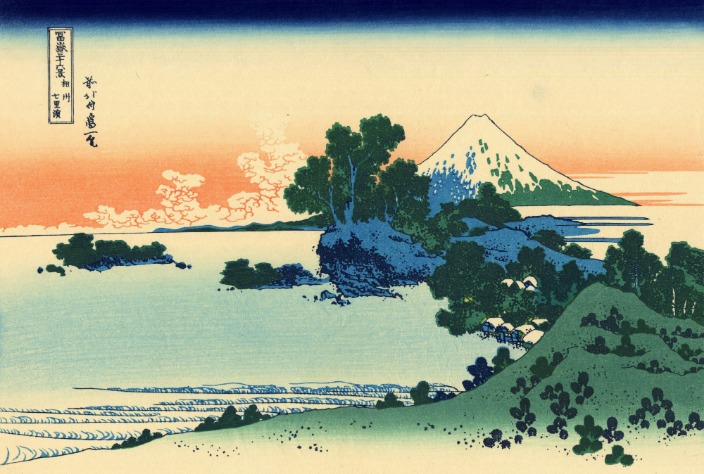Let’s be real for a second. When you think of Japan, your brain probably serves up a highlight reel of neon-lit megacities, serene temples, and impossibly fast trains. And yeah, that’s all there. But the real magic, the stuff that makes you tilt your head and say, “Huh, that’s interesting,” is in the daily contradictions. It’s a place where ancient tradition and future-tech collide in the most mundane ways, creating a society that is, for lack of a better word, wonderfully weird. And the best part? There’s a method to the madness.
The Art of the Konbini: More Than Just a Convenience Store
First, we need to talk about the konbini. Calling 7-Eleven, FamilyMart, or Lawson a mere “convenience store” is like calling Mount Fuji a nice hill. It’s a catastrophic undersell. These places are the beating heart of daily Japanese life. They are a testament to the national superpower: hyper-efficient problem-solving.
You haven’t truly lived until you’ve paid your electricity bill, bought a new shirt for work, printed a document, picked up a box of exquisite fried chicken, and grabbed a bottle of premium sake—all at 11 PM from the same 100-square-meter store. The food alone is a culinary paradox. How is a egg salad sandwich from a plastic wrapper so inexplicably delicious? Why is the onigiri (rice ball) always the perfect, non-soggy consistency? It’s a mystery wrapped in plastic, sold next to the manga.
The Unwritten Social Contract
This seamless efficiency extends beyond the store shelves and into the very fabric of how people interact. Japan runs on a silent, invisible set of rules that everyone just… gets. It’s the reason you can fall asleep on a packed train with your phone on your lap and wake up to find it still there. It’s why a lost wallet has a statistically high chance of being returned to you, cash intact.
This isn’t about everyone being inherently “nice”; it’s about a profound sense of social obligation and harmony, known as wa. You play your part, I’ll play mine, and together we won’t make a public scene. This is why the streets are so clean despite a notorious lack of public trash cans. You’re just expected to take your litter home with you, a concept that blows many a tourist’s mind. The collective good outweighs the individual inconvenience.
Pop Culture: From Idols to Inescapable Mascots
Then there’s the pop culture engine, which is a universe unto itself. We’re all familiar with anime and manga, but the depth is astounding. It’s not just for kids; salarymen read epic political dramas on their commutes, and grandparents watch animated historical sagas. But the real head-scratcher for outsiders is the idol culture. Groups of incredibly polished singers and dancers who operate under strict, often mind-bogglingly restrictive, rules. Their job isn’t just to perform; it’s to embody an attainable ideal, a perfect-but-relatable persona that fans can support.
And we cannot talk about Japanese whimsy without bowing down to the yuru-chara, or mascot culture. Every prefecture, town, police force, and sewage department seems to have its own adorable, slightly derpy mascot. There’s Kumamon, a grumpy-looking bear who promotes Kumamoto Prefecture and generates billions of yen in merchandise sales. There’s even a mascot for the prison system. Because nothing says “reform and rehabilitation” like a cute, cuddly character. It’s a national strategy to soften the edges of bureaucracy and officialdom with a heavy dose of kawaii (cuteness).
The Foodie Paradox: $10 Michelin Stars and Liquid Bread
Japanese food culture is another beautiful contradiction. On one end, you have the pinnacle of haute cuisine: sushi so exquisite it’s treated like art, and kaiseki meals that are a multi-sensory seasonal journey. These places have Michelin stars, require reservations months in advance, and can cost a small fortune.
On the complete opposite end, you have the glorious world of ramen. This is where the salaryman finds solace. A bowl of ramen is a holy trinity of perfect noodles, rich broth, and flavorful toppings. It’s a meal that is both incredibly affordable and the subject of intense, lifelong dedication. Chefs spend decades perfecting their single bowl. You can find a life-changing meal for under $10, slurped unceremoniously at a counter in five minutes flat. There’s no pretense, only perfection.
And let’s not forget the izakaya—the Japanese equivalent of a pub. These are the decompression chambers of society. Here, the rigid formality of the office melts away over ice-cold beers, highballs, and small plates of grilled skewers (yakitori) and edamame. It’s where colleagues bond, friends complain, and the social pressure valve is released. For a deeper dive into these everyday adventures and hidden gems, the Nanjtimes Japan often has some fantastic insights from people living it every day.
The Quiet Rebellion in a Conformist Society
So, with all this talk of social harmony and unspoken rules, you might think Japan is a society of uniform robots. But that’s where the final, and most fascinating, contradiction comes in. The very strictness of the rules creates the space for incredible, flamboyant self-expression. You see it in the bold, boundary-pushing fashion of Harajuku. You see it in the subcultures dedicated to everything from vintage Americana to gothic Lolita style.
This is the ultimate witty take on Japanese society: the pressure to conform is so strong that the act of rebelling becomes an art form. The same salaryman in his identical dark suit during the day might be an elite-level hobbyist at night—a passionate rock guitarist, an expert aquascaper, or a dedicated collector of vintage vinyl. The freedom isn’t found in breaking the rules outright, but in carving out a unique identity within the accepted framework.
That’s the real secret. The “weird” isn’t a bug in the system; it’s a feature. It’s the pressure and release, the tradition and innovation, the silence and the noise, all existing at once. It’s knowing the rules so well that you know exactly how, and when, to bend them to create something truly unique. And honestly, we wouldn’t have it any other way.





